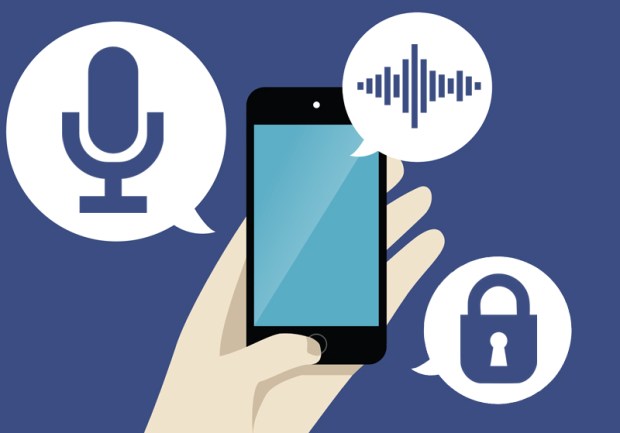Why Voice Biometrics Could Be The Next Game-Changer In Authentication

Billion dollar companies lose 3 percent or more of their revenues a year to mobile fraud. Many have resorted to frequent, impractical creation of complicated passwords to stop these losses – but that just isn’t cutting it. Biometrics, however, introduce “a new paradigm in user authentication,” says AGNITiO. In a new report, AGNITiO breaks down the four key reasons why voice biometrics offers the highest levels of security, convenience and privacy – and highlights use cases where online fraud was reduced by a drastic 75 percent just months after deployment.
Billion dollar companies lose 3 percent or more of their revenues a year to mobile fraud. Many encourage the frequent, and impractical creation of increasingly complicated passwords to stop these losses – but that just isn’t cutting it. Biometrics, however, introduce “a new paradigm in user authentication,” says AGNITiO. In a new report, AGNITiO breaks down the four key reasons why voice biometrics offers the highest levels of security, convenience and privacy – and highlights use cases where online fraud was reduced by a drastic 75 percent just months after deployment.
THE NEED FOR STRONGER AUTHENTICATION
Forced with the task of remembering a multitude of complicated passwords, mobile device users often resort to reusing the same passwords across many systems – or they may fail to change them regularly. This is not an acceptable level of security, says AGNITiO, and the need for stronger authentication is growing. According to a recent survey from mobile identity company TeleSign and RSA, companies with average revenues of $2.5 billion lost an average of $92.3 million a year to mobile fraud.
Hence, organizations are in dire need of achieving stronger authentication levels, and should consider the combination of multiple identification factors, such as:
- Something the user unique knows, like a password
- Something the user unique has, like a USB token
- Something inherent in the user’s behavior, like a frequent and constant act
- Something physically unique to the user, like a biometric characteristic-like voice, fingerprint or iris
THE VALUE OF VOICE BIOMETRICS
Voice biometrics authenticates a user based on numerous vocal characteristics like vocal tract geometry, harmonics, pitch and range, says AGNITiO. The authentication experience is practically invisible – and highly accurate.
Below are the four reasons why voice biometrics are key for strong authentication:
1) Security & Accuracy: Voice biometrics can offer more reliable, spoof-protected and accurate authentication thanks to technical improvements in microphones and processing power in both mobile devices and servers. Spoofing and hacking protection can also be implemented to combat replay attacks and unauthorized access.
2) Convenience: It is the least intrusive of all biometric modalities, and can be implemented with a one or two-second text-dependent passphrase, or with two to three-seconds of text-independent free speech. Higher levels of confidence to authenticate a transaction may depend on the transaction amount –for example, a bank will want a higher level of confidence to authenticate a $10,000 transaction as opposed to a $1,000 one.
3) Cost: Voice biometrics is more cost-effective – it doesn’t require any hardware investment by the user. Microphones in mobile phones, tablets or PCs can be used so there are no additional costs.
4) Privacy: Server-based authentication engines provide control over service and data storage by the payment service provider. And for the consumer, the same authentication technology embedded in their device allows them to maintain control over their own biometric credentials, better protecting their privacy by eliminating the need to transfer sensitive information to servers.
USE CASE: ONLINE FRAUD DETECTION
In a 2014 Gartner report, large financial services institutions said that 30 percent of their fraud occurs through compromises in multiple channels – that includes the telephony channels. Biometric systems can prevent this by comparing users’ “signatures” to known fraudsters, or monitoring legitimate users’ behavior to find out if they are being impersonated or not.
Two leading companies in online fraud detection – Verint and Pindrop – currently use AGNITiO’s KIVOX Passive Detection engine to reduce their online fraud. Their solutions, says AGNITiO, identify and authenticate callers as they speak in real-time. Between 75 percent and 95 percent of the cases detected are repeated attacks, so solutions that can identify professional blacklisted fraudsters prove to be hugely beneficial. They have the power, according to customer data, to reduce fraud by 75 percent just months after deployment.
THE FUTURE OF STRONG AUTHENTICATION
The future of strong authentication for both online and mobile payments will rely upon a multi-factor paradigm – that is, multiple biometrics technologies will need to work together to enhance security and convenience, says AGNITiO. And while users will have choices on which and how many modalities to use, depending on the level of risk, voice biometrics has proven to be an ideal, cost-effective choice in that multi-factor approach.
To better understand how voice biometrics solutions including AGNITiO’s suite of products work to balance authentication accuracy, security and usability, download the full white paper below.

